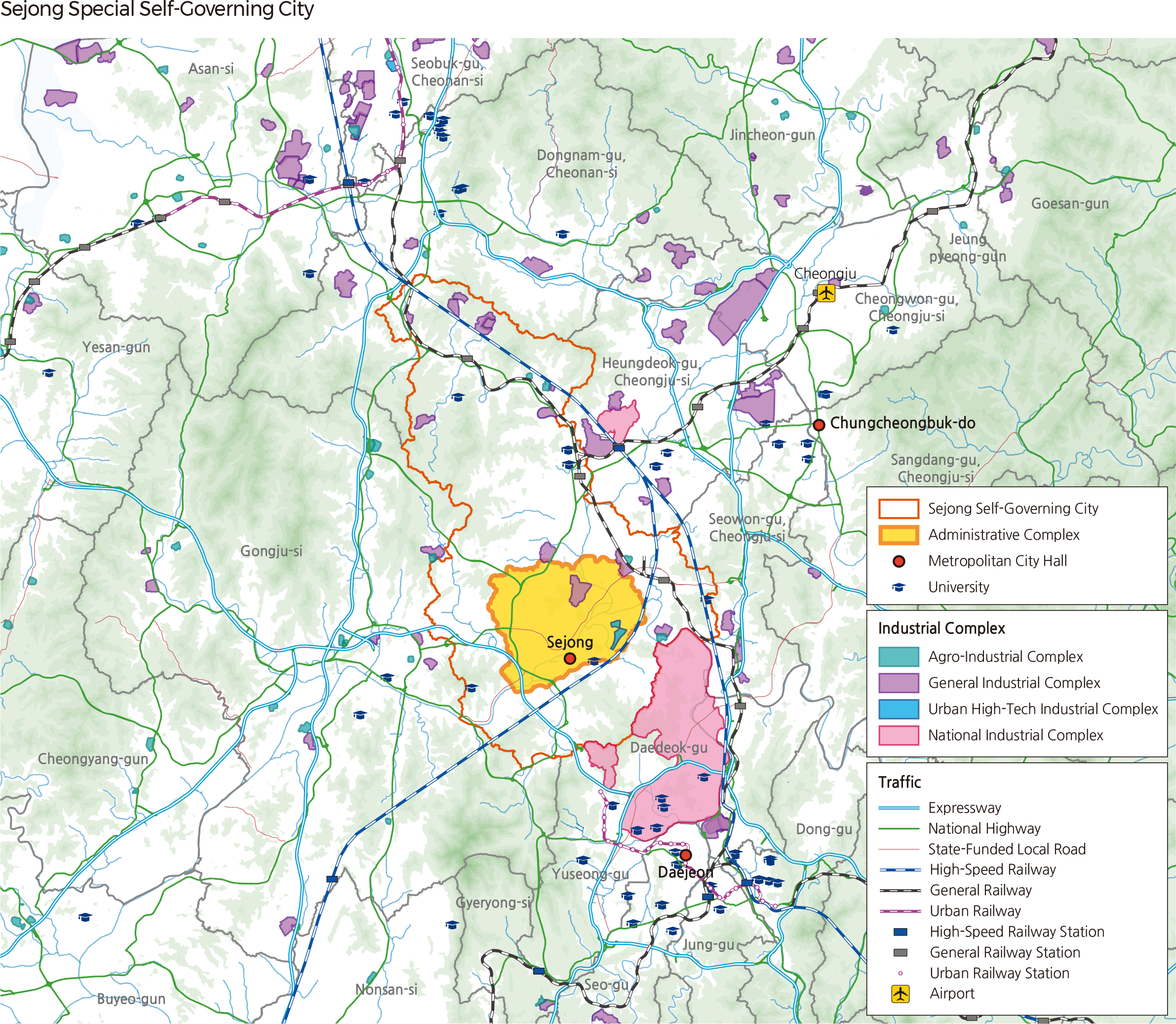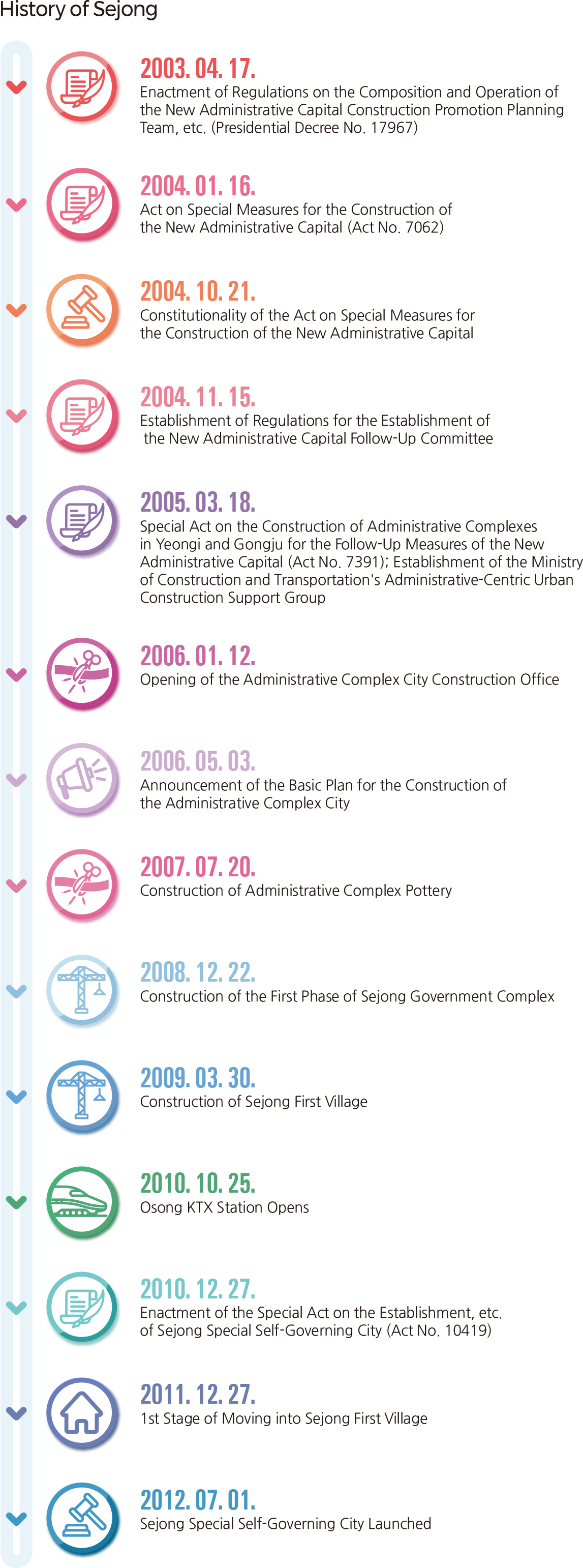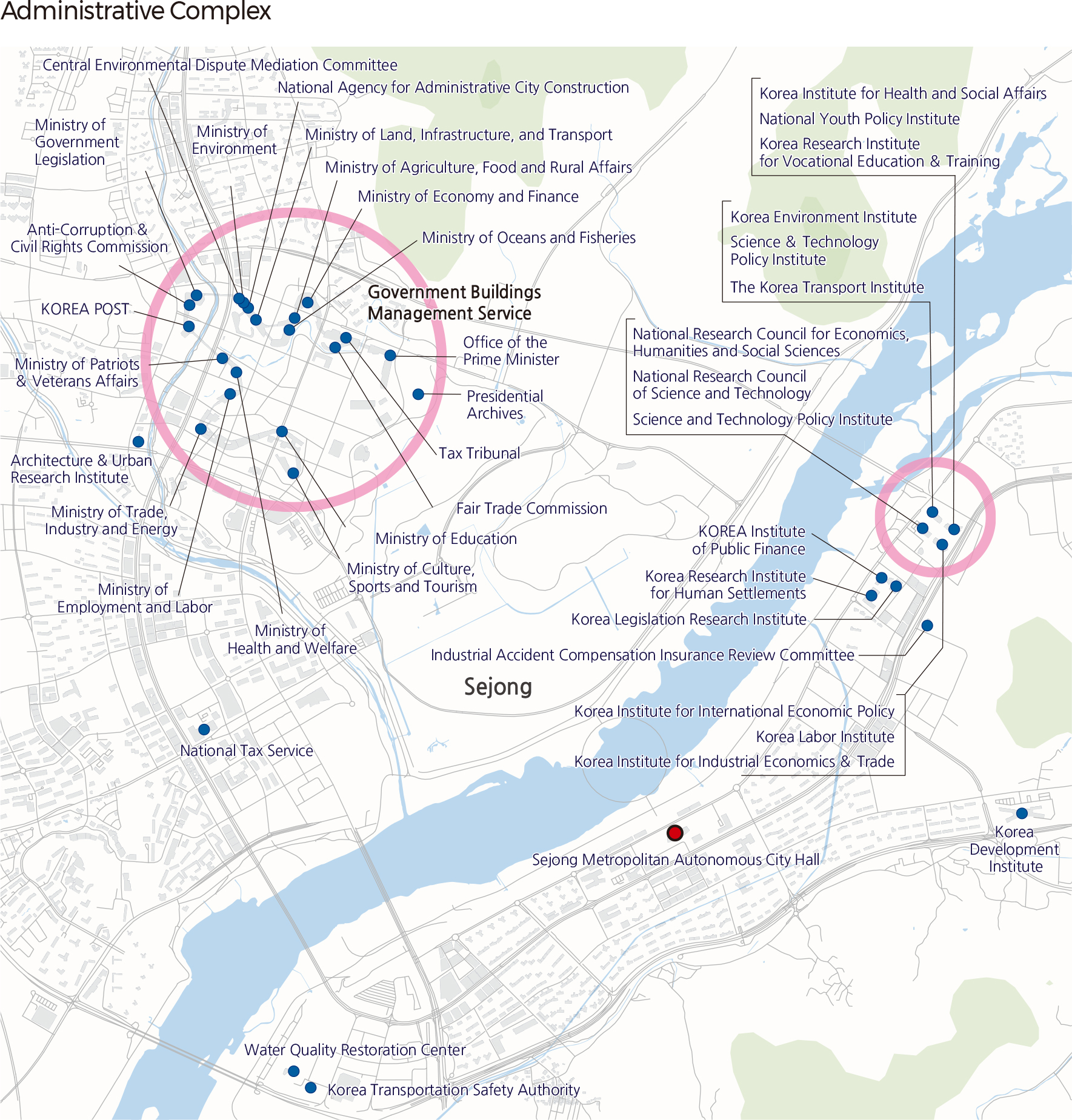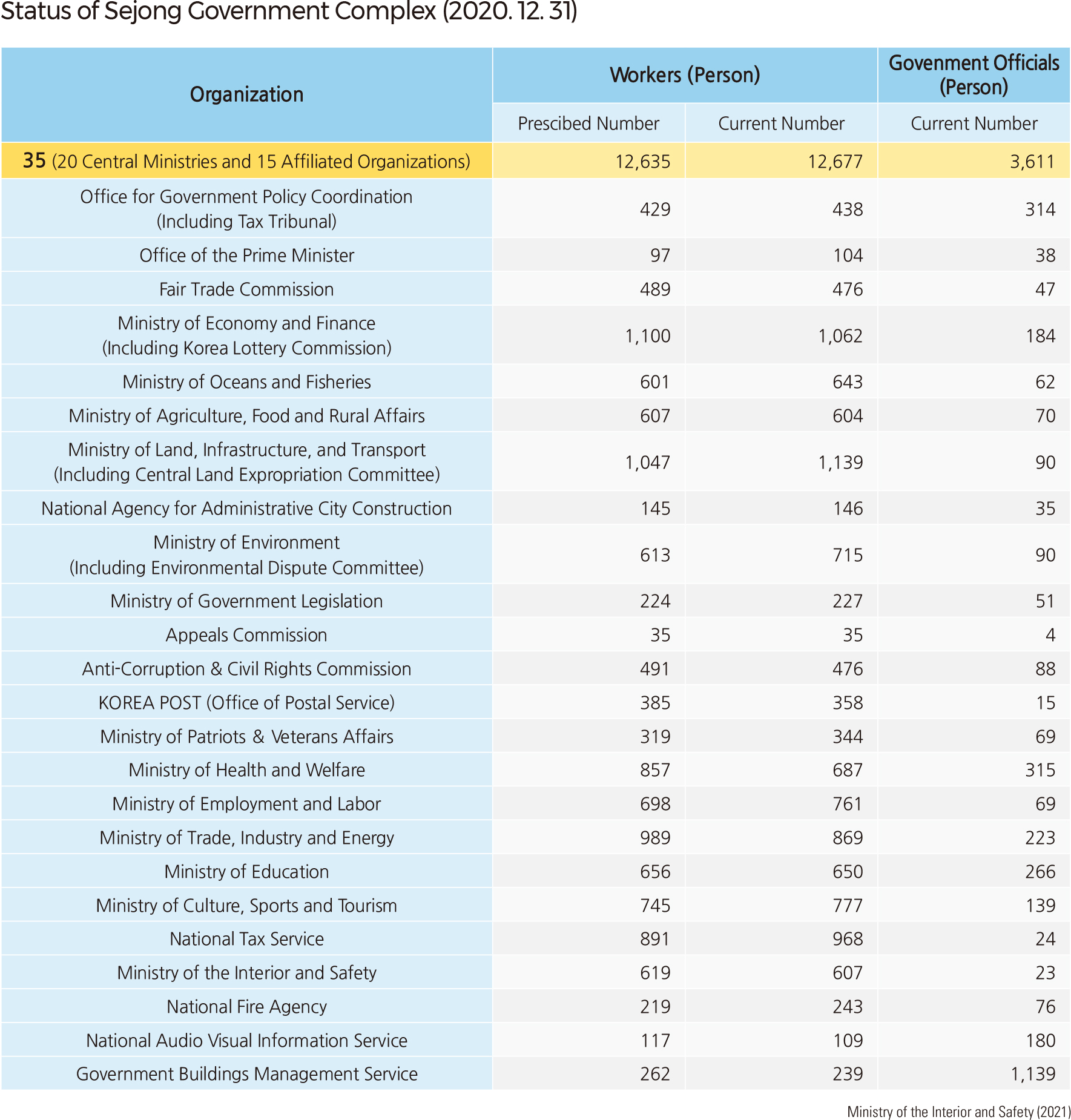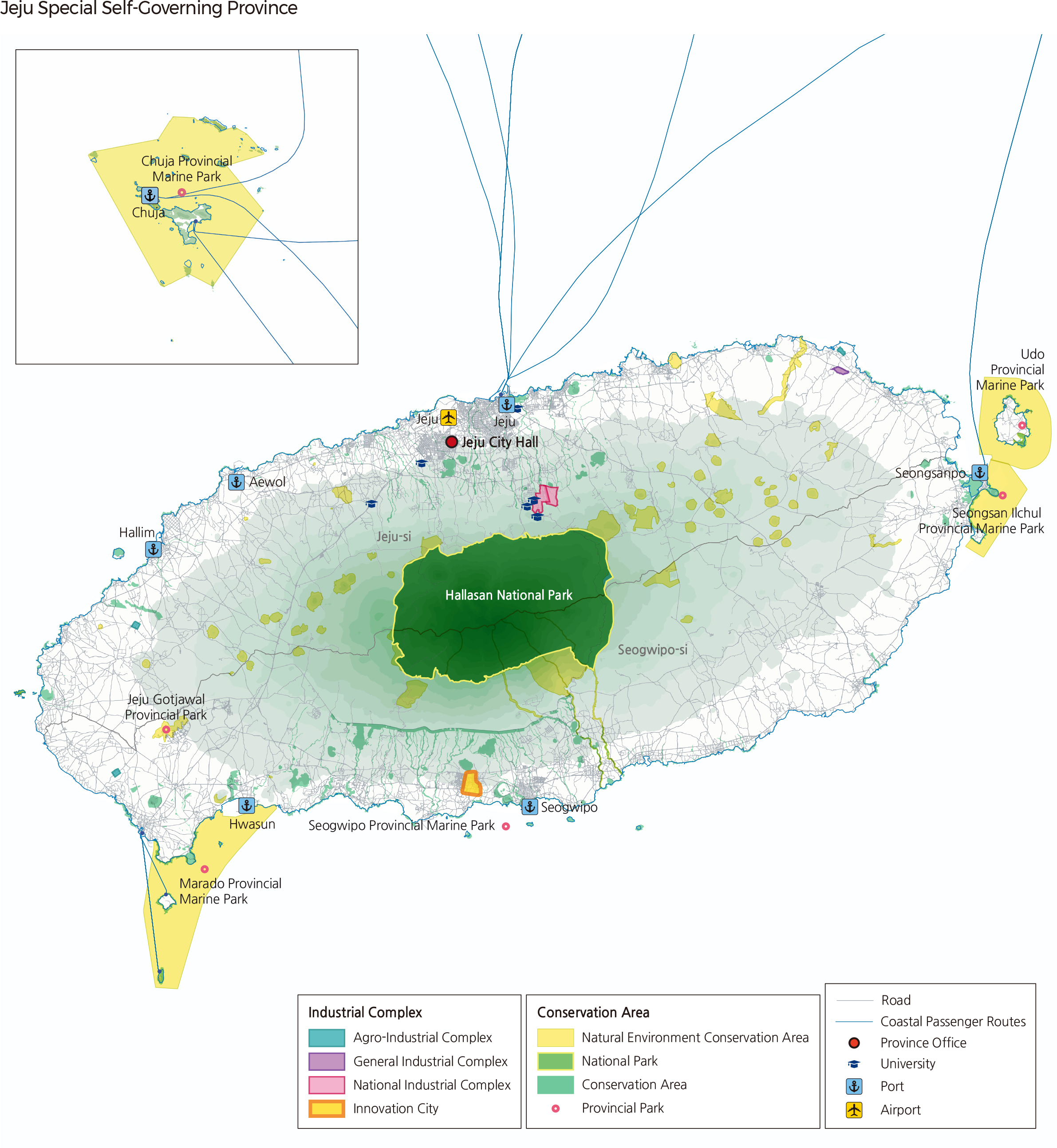English III 2021
The history of Sejong Special Self-Governing City began with the establishment of the New Administrative Capital Construction Planning Team in 2003. As one of the axes of balanced national development, the government promoted the construction of a new administrative capital in the Chungcheong region. However, in 2004, the Constitutional Court ruled that the Special Act on the Construction of Administrative Capital was unconstitutional. However, the government continued its policy of building a new administrative city by changing the name and character of the city from “New Administrative Capital” to “Administrative-Centered Complex City” and reducing the number of relocating central administrative departments. In 2006, the government started construction of a new city centering on the Government Complex Sejong with the opening of the National Agency for Administrative City Construction. In 2011, residents began to move in. Then, in July 2012, Sejong Special Self-Governing City, including an administrative complex city, was first launched as a local government. In 2012, beginning with the Office for Government Policy, the first phase of relocating central administrative agencies to Sejong was completed. In 2013 and 2014, the second and third phases of relocating central administrative agencies were completed. As of 2020, the Sejong Government Complex has 16,288 civil servants working in 20 central ministries and 15 affiliated organizations. The total number of civil servants in the central government is 746,267. In addition, 16 national research institutes moved to Sejong-si, and about 1,500 employees work there. Approximately 20,000 government officials and employees of government-affiliated organizations and institutes work in Sejong-si, which is 16% of the 125,410 employees in Sejong-si as of the end of 2020.
Jeju-do, separated from Jeollanam-do in 1946, became a Special Self-Governing Province on July 1, 2006, according to the Special Act for the Establishment of Jeju Special Self-Governing Province and the Creation of a Free International City (the Jeju Special Act). The launch of Jeju Special Self-Governing Province was the beginning of the local autonomy and decentralization system. Of the central government’s powers, 1,062 powers, such as autonomous police, a recall system for residents, and education autonomy, were transferred. It is the case that the decentralization policy was first introduced in Korea. The central government reduced the number of countries that do not allow visa-free entry from 22 to 10 for the strengthening of independent fiscal power and economic development and transferred more powers to the Special Self-Governing Province than existing free economic zones, such as the establishment of international high schools and foreign profit-making corporations. In addition, along with the transfer of authority from the central government, the “Jeju Special Self-Governing Province Performance Evaluation System” was introduced following the agreement between the prime minister and the governor of the Special Self-Governing Province to promote decentralization development. The special plan for Jeju begins with the review of the Jeju Free Port or Free Zone by the 1963 Supreme Council for National Reconstruction. In 1964, according to the Jeju Island Construction Comprehensive Plan, five tourism offices were established at Jeju-si, Hallasan, Seogwipo-si, Seongsan-eup, and Daejeong-eup. In 1966, Jeju Island was designated as a “Specific Region,” providing a basis for strengthening support from the central government. In 1972, the Comprehensive Development Plan of Jeju-do was developed as a follow-up measure to the First Comprehensive National Land Development Plan (1972–1981) of the Ministry of Construction. After the completion of this plan, the development of Jeju-do was carried out in two directions: the Comprehensive Plan for Specific Regions as the national plan and the Comprehensive Development Plan of Jeju-do as the provincial plan. In 1992, the Jeju Special Development Act came into force with the expiration of the designated period for a specific region, resulting in the Comprehensive Development Plan of Jeju-do in 1994. Jeju Free International City has been promoted since 1998. In 2004, the Five-Year Plan for Innovative Development of the Jeju Region was established according to the Balanced National Development Policy, and government agencies in the Seoul Metropolitan Area moved to Seogwipo Innovation City. In August 2005, a referendum was held to ask about the administrative structure reform necessary to implement the Jeju Special Self-Governing System. 57% supported the proposal to establish a single metropolitan government. As a result, Jeju Special Self-Governing Province was launched in 2006 with the enactment of the Special Act for the Establishment of Jeju Special Self-Governing Province and the Creation of Free International City. Accordingly, from 2007, the regional development plan once centered on the central government was transferred to the provincial government, and the first Comprehensive Plan of Jeju Free International City was established. In 2012, the 2nd Comprehensive Plan (2012–2021) for the balanced development of the four regions was established. In addition to the national Natural Environment Conservation Area, Jeju Special Self-Governing Province designates Absolute, Relative, and Controlled Conservation Zones according to the Jeju Special Act enacted in 2006. As of December 2019, of the total area of 1,850.21 km2 of Jeju, the Absolute Conservation Zone was 214.40 km2, the Relative Conservation Zone 12.76 km2, and the Controlled Conservation Zone 1,233.30 km2. According to the Ordinance on the Management of Conservation Areas of Jeju Special Self-Governing Province, these zones are designated by grades, such as groundwater resource conservation zones, ecosystem conservation zones, and landscape conservation zones, based on their environmental characteristics. In addition, as a significant conservation area, there is the Jeju Island Biosphere Reserve, designated by UNESCO in 2002, which is also specified as a conservation area in the Jeju Special Act. The site covers the entire island of Jeju, including the marine zone within 5.5 km of the coastline, and consists of a core zone, a buffer zone, and a cooperative zone, respectively, on land and ocean (Jeju Island Biosphere Reserve). |
